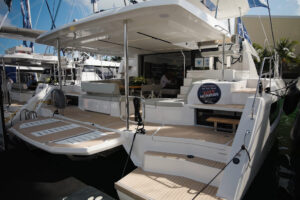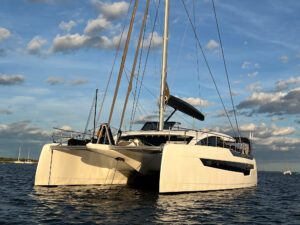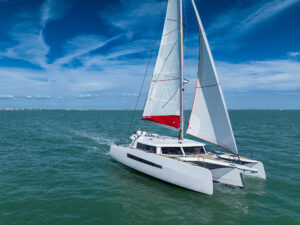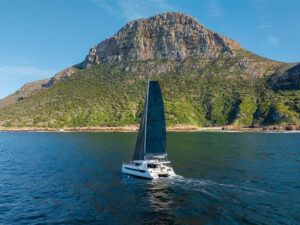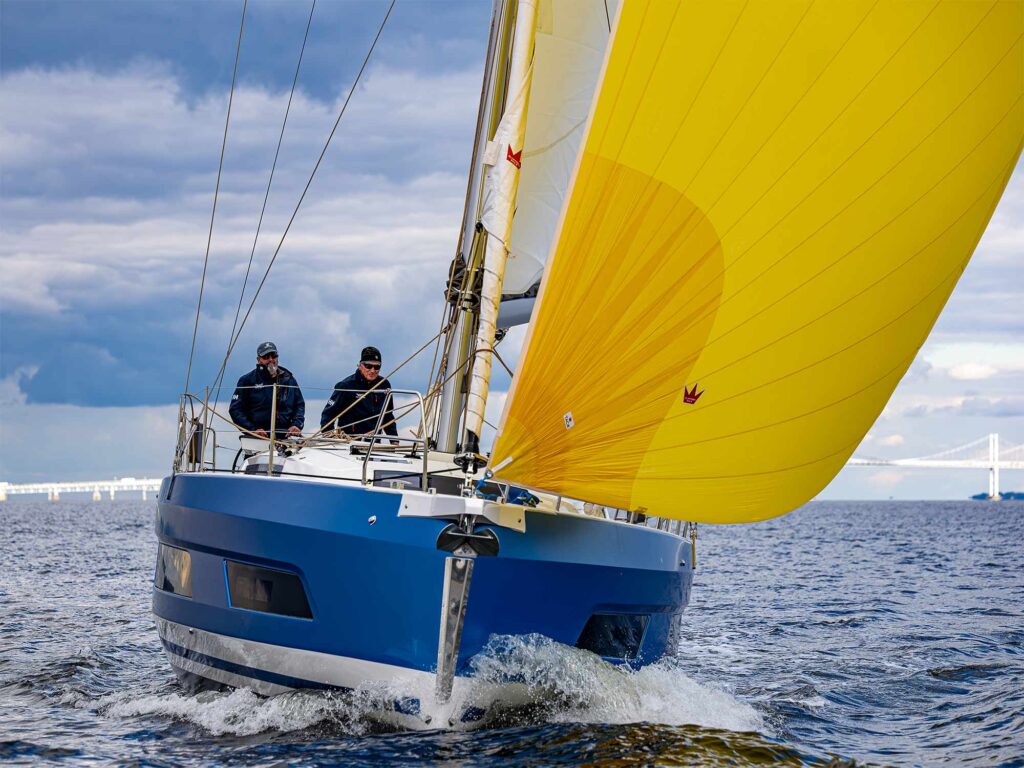
Michel Dufour was one of the earliest pioneers of composite boatbuilding in Europe. A keen racing sailor with a background in mechanical engineering, he started Dufour Shipyard on the French Atlantic Coast in 1964. Some 60 years later, the company that bears his name continues innovating with new sailboat designs in models ranging from 37 to 61 feet.
Cruising World’s Boat of the Year judges test-sailed the Umberto Felci-designed Dufour 41 this past October in Annapolis, Maryland, and came away with several fresh impressions from this storied builder. The first one struck us at the dock: a bold visual impression. Today Dufour Yachts’ La Rochelle headquarters stands only 60 miles from Les Sables d’Olonne, start of the quadrennial Vendée Globe nonstop solo round-the-world race, so it’s no surprise that from its bow on, this new Dufour echoes the looks of the latest IMOCA racing machines. Felci’s hull is stepped outward above the waterline, then rolls back inward again near the sheerline, bringing the beam well forward while preserving a narrow waterline entry for windward performance under sail.
That same feature contributed to our second strong impression when we walked below: an impression of light. The designer’s choice to carry the beam forward opens the interior such that this 41-footer feels more spacious than other boats of the same length. Longitudinal windows in both the hull and the cabin house, plus ample hatches in the coachroof, flood the interior with daylight.
Interior designer Luca Ardizio employs indirect LED lighting and soft colors to carry that same light and open feeling throughout the boat after the sun goes down. Interior treatments come in two versions: Europe (for a modern urban look) and Boston (traditional yacht look).
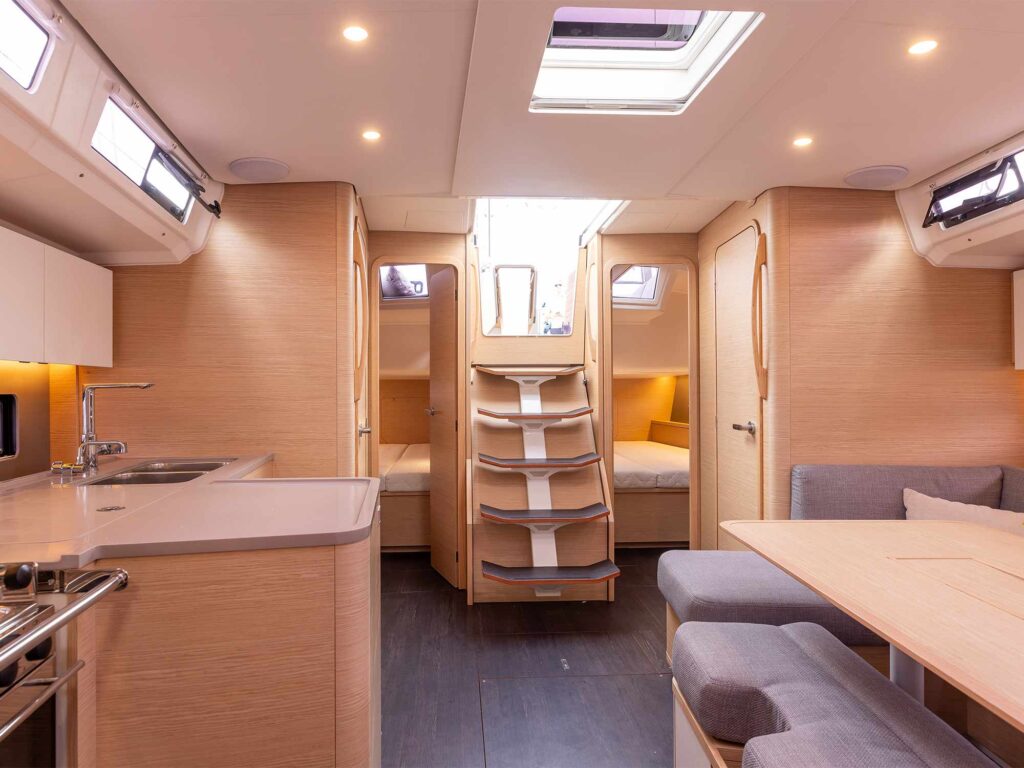
The 41 comes in one of three layout options with either three or four private cabins and either two or three showers and heads. In the four-cabin version, a true soundproof bulkhead separates the cabins, each with generous 57-inch berths. Yet Dufour knows that the outdoors is where sailors most love to spend their time. With optional refrigeration and grill top at the transom, why would you ever go below? Long cockpit settees accommodate guests, while most of the sailhandling can occur aft of the two wheels.
Felci’s design team has stuck with a single deep rudder on centerline, while many competitors have transitioned to twin rudders. The BOTY judges appreciated that this single rudder is protected by the keel. In close-quarters maneuvering, the boat turned within its own length, answering to prop thrust alone (not boatspeed, as twin rudders require) to effect turns.
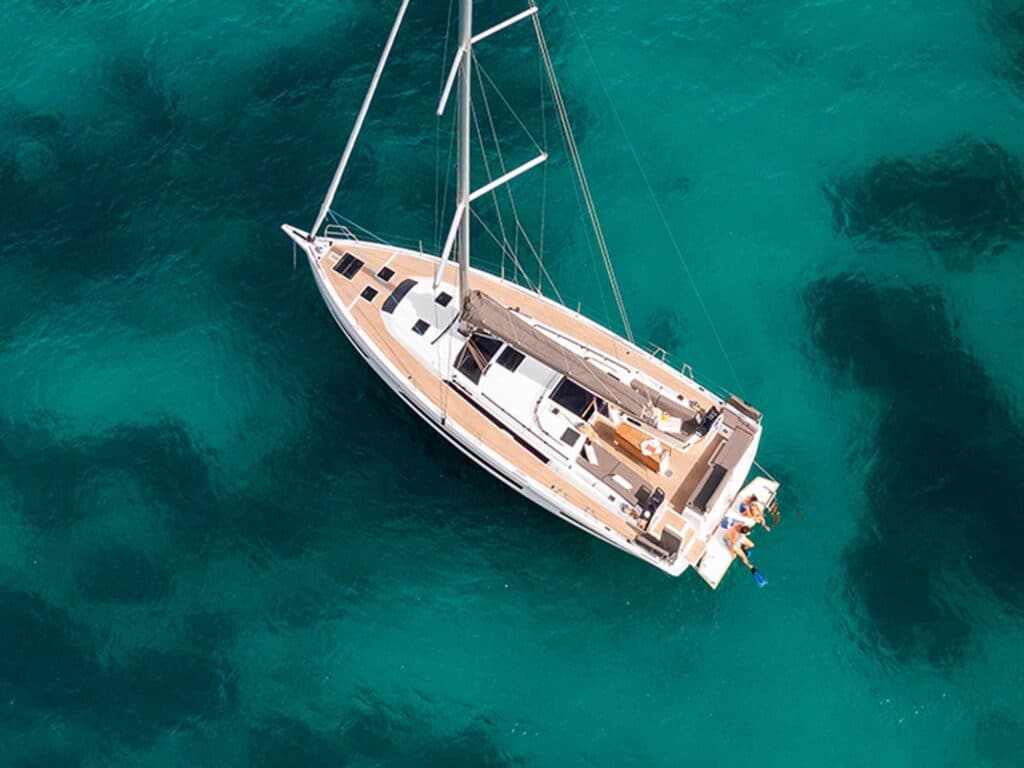
Sailhandling was simple and safe, with the mainsheet blocked forward of the cockpit and away from guests. The self-tacking headsail makes every maneuver virtually hands-free. As we learned in Annapolis, the elements we saw aboard the new Dufour 41 are the same ones that will mark at least the next four years of design throughout the whole Dufour fleet. Messrs. Felci and Ardizio and the Dufour engineers clearly know how to take a sailboat and light it up.
For more information on the Dufour 41, visit dufour-yachts.com/en/luxury-yachts/dufour-41/

